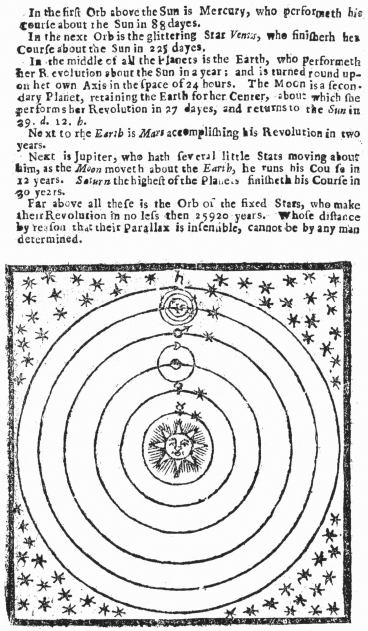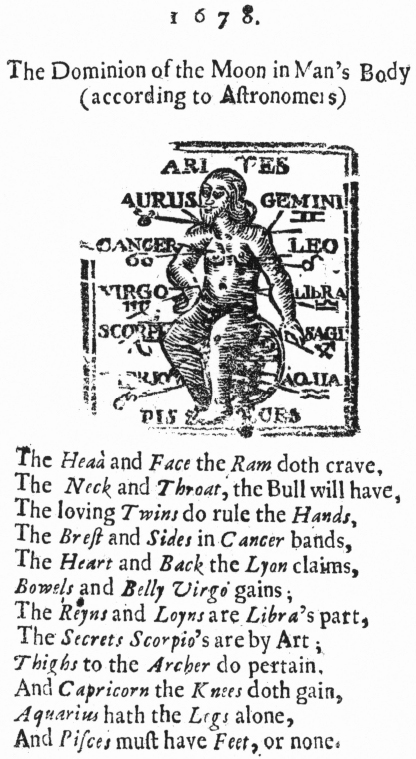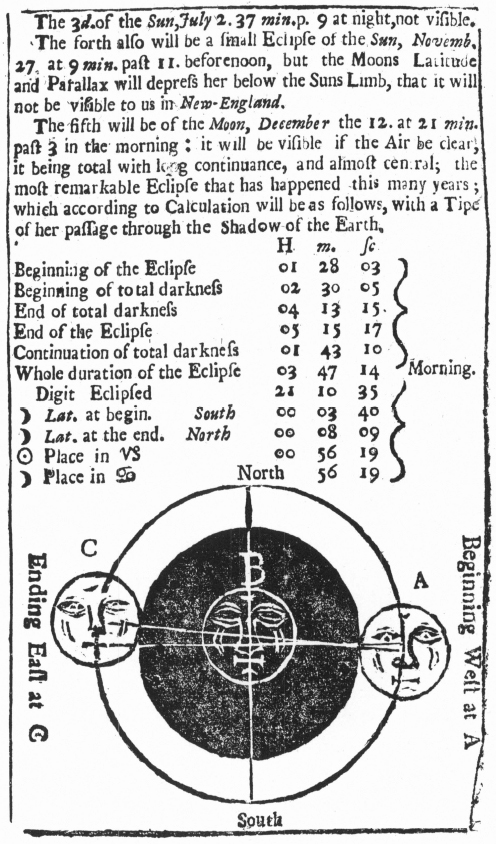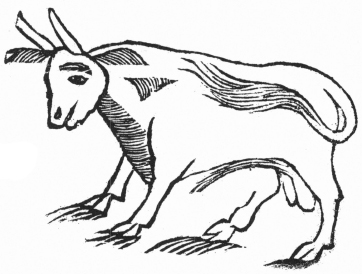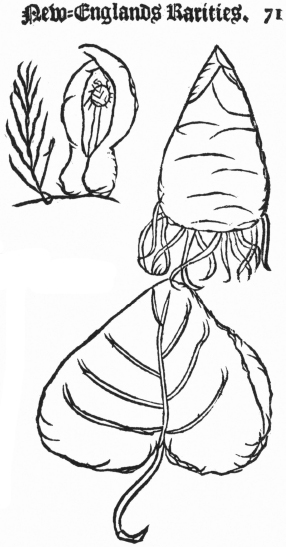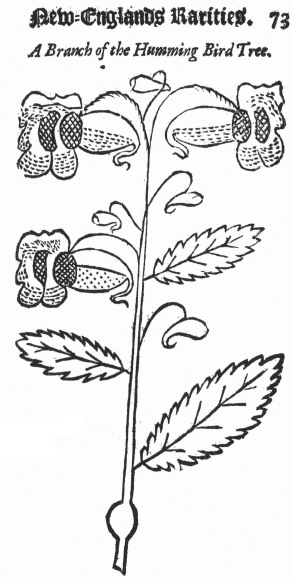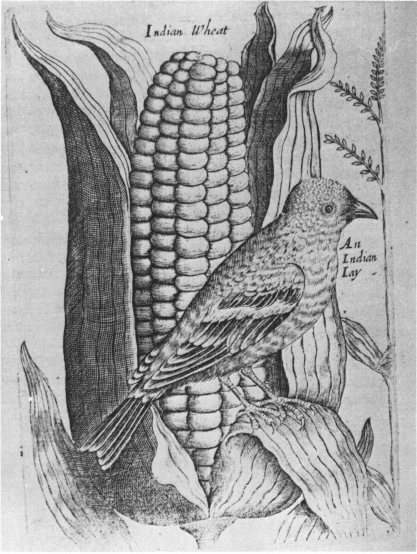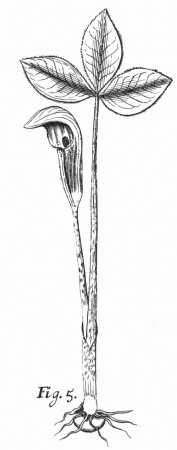American Scientific Illustration, 1675–1775
THE study of scientific illustration from an art historical or simply from a historical point of view is one of those topics which seems to have been singularly neglected.1 To the extent that art historians or bibliographers have studied American illustration, they have been concerned primarily with the work either of early wood cutters and wood engravers illustrating literature and poetry2 or the work of major artists such as Winslow Homer.3 Each of these areas leaves the illustrator more or less free to exercise his imagination and this is essentially the difference between illustrator’s illustration and scientific illustration; where the former can do more or less what he pleases, the scientific illustrator must make a precise visual statement of exact fact. And that visual statement must be exactly repeatable. To be repeatable the illustration must be printed from an engraved or relief plate; it must, in fact, be a “print.” Before turning to the prints, however, let us look briefly at the nature of science in colonial America, in the one-hundred-year span covered by the years of this conference, 1675–1775.4
Science in America prior to the Revolution consisted primarily of descriptive natural history with a smattering of astronomy in the New England states. There was considerable activity in the field of medicine, but as the first illustrated American medical book did not appear until 1786,5 we can exclude this field from our discussion entirely. In late-seventeenth- and eighteenth-century New England astronomy was popular, at first among a small circle of educated clergymen and later among the general populace, and it is in this field that we find the first scientific illustrations made and published in America. The vehicle for this publication was the monthly almanac, and much of this astronomical material was tied in with the great interest in astrology and astrological botany. As the nature of these illustrations was crude in the extreme, and as they were linear and schematic representations of the movements of celestial bodies, and in every case diametrically opposed to the natural history illustrations which were, or attempted to be, exact illustrations (i.e., “illusions”) of how real things actually looked, it is perhaps more correct to call them diagrams rather than illustrations. In any case, let us look at a few of them. The earliest such diagram that I have been able to find (Fig. 102) was published in Boston in 1675 and was first called to my attention by Richard B. Holman in his lecture at Winterthur in 1970.6 He identifies it as the work of John Foster. This marvelous image depicts the stellar universe as described by Galileo and Copernicus. How curious our ancestors were; on the one hand they would accept the most advanced and sophisticated ideas of the new science of the humanistic philosophers of the Renaissance while at the same time maintaining a conventional and literal belief in the fundamental tenets of the Christian religion. As is well known, this dichotomy lasted well into the nineteenth century and in some respects still exists today. But let us look at the illustration as divorced from these considerations. The technique, a relief print cut from a wood block, was to remain the only medium for scientific illustration published in America for about fifty years.7 The iconography of the Foster cut is extremely interesting. The fields of stars in the four spandrels, to symbolize, presumably, the outer reaches of the solar system, and the smiling sun with sunburst in the center, are taken directly from mediaeval prototypes; the star fields especially remind one of the painted vaults of gothic cathedrals. These mediaeval visual conventions stand in stark contrast to the actual meaning of the illustration which is, of course, one of the great discoveries of the Renaissance, the fact that the earth and the other planets revolve around the sun. I think perhaps the point to be made here is that while the content is highly and truly scientific, the actual design and execution were left up to the artisan, who combined mediaeval folk traditions with modern scientific principles. In short, there was no tradition or precedent to be followed so he did as he pleased. Though I have not found sources or models for this and the following astronomical illustrations, I am certain that they were copied from earlier English almanacs. They were not original diagrams of American “invention.”
102. The Copernican System, published in 1675
We tend today to think of astrology as a pseudoscience, but in the period under discussion it was very seriously taken. Figure 103 is a woodcut of the so-called “man-of-signs” from another of the almanacs published by John Foster in Boston, this one in 1678. This was the first American appearance of the man-of-signs, but it was a popular image; as Sinclair Hitchings has shown, it was used over and over again.8 A major feature of the almanacs was the monthly appraisal of the moon’s phases and the positions of the other signs of the zodiac for the farmer and the gardener. In various anatomical versions the man-of-signs appeared and reappeared throughout the literature of many centuries prior to the period of this paper. John Foster probably copied his image from an English almanac.
Another, and more purely scientific purpose which these crude woodcuts served was to illustrate the principles of the lunar eclipse. The first of these (Fig. 104), published in 1703 in Samuel Clough’s Almanack (Boston), shows two positions of the moon in its revolution around the earth. Another (Fig. 105), published in 1704, also by Clough, shows “how the eclipse of the moon may be either total, partial, or not at all.” And a third (Fig. 106), published by Bo wen in 1723, shows the earth and moon in relation to the sun. All of these have a bold and appealing aesthetic quality and the faces are quite wonderful; the similarities to the contemporary gravestone carving may well be more than accidental. But they are still diagrams, showing schematic movements of celestial bodies, rather than precise illustrations of specific objects, which, it seems to me, is the most accurate basic definition of scientific illustration. Let us turn, then, to some more or less precise illustrations of specific subjects.
103. The Man of Signs, published in 1678
The earliest prints of this sort which I have found are of zoological subjects, four crude woodcuts of a bull, a horse, a ram, and a hog in John Smith, The Husbandman’s Magazine (Boston, 1718), the only known copy of which (Fig. 107) is owned by the American Antiquarian Society.9 It would be convenient to suggest that these were drawn from nature, rather than copied from an earlier printed source. But I am convinced that they are copies.10 In England and Europe in the early years of printing there was a long tradition, in fact going back to antiquity, of copying illustrations from earlier printed or manuscript sources, with an increasing loss of meaning and clarity each time. One of the great steps forward in the incunable period of printed scientific illustration was the act of drawing specimens “from nature” rather than copying them from an earlier source.11 But what I suspect we have here, well into the eighteenth century, is a reversion to the act of copying. The model was probably a seventeenth- or early-eighteenth-century English farming manual, such, for example, as James Lambert, The Countryman’s Treasure (London, 1683), with cuts.12 According to the notes in The Colonial Scene exhibition catalogue these four cuts may have been executed by James Franklin, brother of Benjamin, who is known to have possessed some skill at engraving in the woodcut manner.13
104. Eclipse diagram, published in 1703
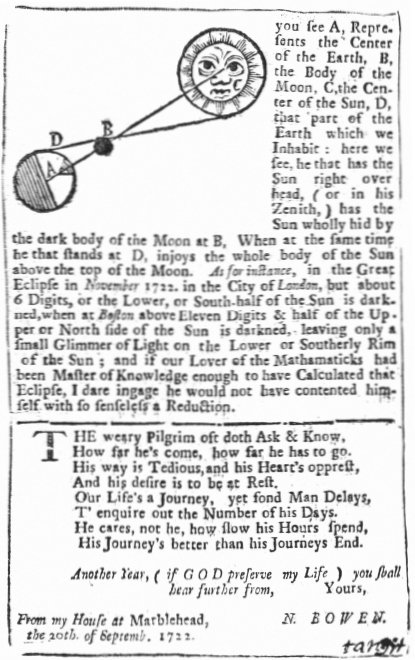
106. Eclipse diagram, published in 1723
107. The Bull, 1718
108. Skunk cabbage, published in London, 1672
The bull is the last American-made print to be considered here; at this point we turn our attention to English illustrations of American subjects. Omitting John White’s watercolor drawings of flora and fauna of Roanoke, Virginia (they are one hundred years earlier than the period covered by this paper), we may pause to look at several crude cuts (Figs. 108 and 109) in John Josselyn’s New-Englands Rarities Discovered (London, 1672). These are of no special merit for their scientific value; indeed, Joseph Ewan, the distinguished historian of American botany, has called them mere “caricatures.”14 But they are worthy of notice for several reasons; first, they would appear to be based on drawings which were made from nature, or at least from specimens, rather than copied from earlier sources. The two cuts shown here are of the skunk cabbage and the jewelweed or touch-me-not. We are told by Steams that this is the first illustration and description of the skunk cabbage.15 One of the basic functions of all good illustration is to expand upon and form an integral unit with the text; in the most basic sort of way that is the case here, as shown in the text accompanying the cut of the skunk cabbage:
109. Jewel weed, published in London, 1672
This plant is one of the first that springs up after White Hellibore, in the like wet and black grounds, with a sheath or hood like dragons, but the pestle is of another shape, having a round purple ball on the top of it beset (as it were) with burs, the hood shoots forth immediately from the root, before any leaf appears, having a green sprig growing fast by it like the smaller horse tayl.
It is curious that Josselyn did not mention the smell of this noxious plant. The Josselyn cuts are somewhat of a problem in their extreme crudity; they are on about the same level of competence, if not below, the American cuts attributed to James Franklin, yet they were done in London, where skillful engravers were easily found. Why did not Josselyn or his publisher, Widdowes, employ a more skillful engraver? Probably because of financial reasons. Indeed, one suspects that Josselyn might have done his own illustrating and engraving, so poor are the cuts. But they are nevertheless an exactly repeatable pictorial statement and they are worthy of mention at least because they served to illustrate the most complete natural history of the colonial era, to be superseded only after the Revolutionary War, by Manasseh Cutler in 1785.16
In all of the woodcuts we have seen thus far there is a similarity to most of the natural history illustrations (also woodcuts) of the incunabula period, that is to say from c. 1475 to 1500. The one significant difference would seem to be the fact that Josselyn’s illustrations were based on nature (though there were also a few notable exceptions among the incunables, such as the Gart de Gesundheit, 1485). But the quality of realism, so basic to the principle and purpose of scientific illustration, has been singularly absent. But there were at that same time other artists, engravers, and publishers who could and did produce much more accurate illustrations. Let us now turn to some of these.
110. Blackbird and ear of corn, published in London, 1651
In rather sharp contrast to the Josselyn cuts is a small engraved frontispiece (Fig. 110) to an excessively rare twenty-four-page pamphlet by Edward Bland called The Discovery of New Britaine, published some nineteen years earlier than the above work, in 1651. Because of the considerable accuracy of this illustration (Professor Ewan tells us that it was identified by McAtee, 1955, as a blackbird)17 it would be most interesting to know who made the drawing. A possible clue might be found in Francis Willoughby’s Ornithology (London, 1678). Some of Willoughby’s plates were engraved by William Faithorne and the similarity of these, and especially the caption lettering, to the Bland frontispiece, is notable. Whoever made the original drawing for the blackbird obviously had a real blackbird to copy (and also an ear of corn). Whether these were actually drawn in America or in London is impossible to say; more probably the latter, with the artist working from a specimen, as there were even in the 1650’s many collections of natural history objects going to London. The fact that illustrations of this quality and Josselyn’s quality were being published at more or less the same time is an indication that there was no such thing as standards of quality in scientific illustration. The sole motivation for publishing of any kind at this period would seem to have been the profit motive, as indeed it largely still is, though we do of course now have university-, museum-, and government-sponsored and supported scientific publications, which largely came into being in this country in the nineteenth century.
But good or bad, both Josselyn and Bland were peripheral at best, and not truly products of a trained scientist. In seventeenth-century America there was really only one outstanding naturalist and scientific illustrator, John Banister (1654–92) of Virginia. It has elsewhere18 been pointed out that Banister executed the first detailed and careful drawings of the flora of North America, and he is the subject of a recently published full-scale scholarly treatise by the inimitable Joseph and Nesta Ewan.19 Educated at Oxford in botany and natural philosophy, Banister came to Virginia in 1676 as a clergyman for the Church of England.
He began at once observing, collecting and describing in Latin phrases the plants . . . he found there . . . In the remarkably short span of three years he assembled a catalogue of the plants he had found, noting their relationships with European species, or suggesting possible alliances with European species if the plants were totally new to him. Made acutely aware of the value of preparing a graphic record, he taught himself to draw, and fifty-three of his sixty-five drawings survive in the British Museum, the majority published, sometimes modified, and with or without acknowledgement to their source, by Plukenet (1691–1705) whose Phystographia was extensively used by Linnaeus in his works on American botany.20
In their book the Ewans reproduce all of the known Banister drawings but only one of Plukenet’s engravings. As it seemed germane to this study to determine how closely the engraver did (or did not) adhere to Banister’s drawings, I carefully went through the Yale copy of Phystographia, comparing the engravings with the original drawings as illustrated in the Ewans’ book. Where the drawings were straightforward, self-contained, and without special instructions to the engraver, the fidelity is high, the only major difference being, naturally, that the engraving is a mirror image of the drawing. That is well illustrated, for example, in the Jack-in-the-pulpit (Fig. 111 and Fig. 6 in Ewan, Banister). But where there are special instructions to the engraver, as in the case of the shooting star, the engraver seems to have lost control. In Banister’s original drawing (Fig. 45 in Ewan) he gives the following special instructions: “NB Let ye graver make the stalk 2 or 3 inches shorter for by inadvertance it is made so much too long.” In the finished engraving (Fig. 112) we see that the stalk is not only much shorter, but omits the root structure and leaf formation altogether. In fact, the engraving departs so far from the original drawing in this case that there seems a possibility that this plate was engraved after another drawing, but if so, that drawing is lost. It is especially curious that in Banister’s drawing the blooms should be closed whereas in the engraving they are open. But there is no doubt that they both represent the same flower.
111. Jack-in-the-pulpit by Banister as engraved in London, 1691
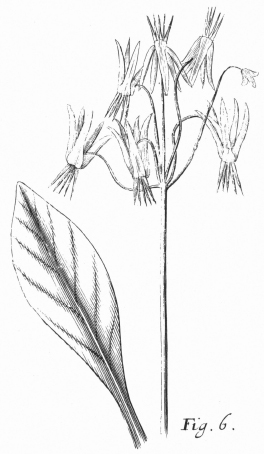
112. Shooting star by Banister as engraved in London, 1691
We know that Banister carefully thought through the matter of making drawings, for he goes into this at length in a letter to Plukenet written from Virginia in 1682 and now preserved among the Sloane Manuscripts in the British Museum. Pointing out that the use of dried plant specimens can lead one into many errors, Banister writes,
I betook myself therefore to drawing which how well I have or with a little more practice I may perform I must leave to you and others to be judges of. Only first let me acquaint you with the method I use. I first consider the height of the plant or that part at least that I intend to describe upon the paper. The next thing I take notice of is, the length of the paper I intend to draw the plant upon to whidth [sic] of proportion the whole plant: root leaves stalk flowers &c. so that where (in those draughts) you meet with any decimall number as that is to 100 so is that plant upon the paper to the plant as it grows and when you meet with this the one of equality = it follows the draught upon the paper is just that bigness of that by which it was drawn.21
There is another point of interest in this connection, which is mentioned in Banister’s letters. William Byrd, who we know ordered a wide variety of imports for Virginians or helped facilitate their import, wrote to his agent in London in 1686 for “Salmon’s Polygraphice last edition.”22 The context of the letter makes it clear that this was ordered for Banister’s use. William Salmon’s Polygraphice or the arts of drawing, engraving, etching, limning, painting, varnishing, japanning, gilding, etc. was a standard and very popular seventeenth-century manual published about 1672, with many later editions, an eighth being published in 1701. It contained chapters which would have been useful to Banister, as a beginner, on “The Limning and Colouring of Flowers” (Chap. 43); “Of the Limning of Fowls” (Chap. 46); “Of the Limning of Beasts” (Chap. 46), etc. And in another letter written to the collector James Petiver, Banister himself asks for “3 or 4 quire of good paper for draughts.”23 As Professor Ewan has said, if John Banister had lived beyond his thirty-eight years he would certainly have profoundly altered the course of science in colonial America. But even such work as he did do clearly establishes him as the leading scientific observer and illustrator of his century and the most important person in this field until the appearance in 1712 of Mark Catesby.
Catesby has been so well and thoroughly studied that we need not dwell on him for long here.24 His great achievement was, of course, the two-volume Natural History of the Carolinas Florida and the Bahama Islands published in parts between 1731 and 1743. He tells us in his preface that “while not bred a painter” he made all the drawings himself, most while the specimens were alive, or, in the case of plants, “while fresh and just gathered.” He further tells us that he “was initiated in the way of etching them myself, which I have not done in a graver-like manner, choosing rather to omit their method of cross hatching, and to follow the humour of the feathers, which is more labourious, and I hope has proved more to the purpose.” And in the matter of coloring he says:
The illuminating of natural history is so particularly essential to the perfect understanding of it, that I may aver a clearer idea may be conceived from the figures of animals and plants in their proper colours, than from the most exact description without them: wherefore I have been less prolix in the description, judging it unnecessary to tire the reader with describing every feather, yet, I hope I have said enough to distinguish them without confusion.
Furthermore, he says:
of the paints, particularly greens, used in the illumination of figures, I had principally a regard to those most resembling nature, that were durable and would retain their lustre, rejecting others very specious and shining, but of an unnatural colour and fading quality. Yet give me leave to observe, there is no degree of green, but what some plants are possessed at different times of the year, and the same plant changes its colour gradually with its age: for in the spring, the woods and all plants in general are more yellow and bright; and as the summer advances, the greens grow deeper, and the nearer their fall, are yet of a more dark and dirty colour. What I infer from this is, that by comparing a painting with a living plant, the difference of colour, if any, may proceed from the above-mentioned cause.
These are valuable observations as they deal directly with the fundamental problems and concerns of the scientific illustrator. The scientific accuracy of the bird plates has been analyzed by Elsa G. Allen25 and while Frick and Steams have produced a model study of Catesby himself, with much on his book and its illustrations, there is not as yet a study of the scientific accuracy of the botanical portion of the Natural History. Such a study would prove helpful, but it is not likely to change the position of Catesby as a “pioneer in the field of scientific illustration.”26
Finally, we bring this rambling survey up to the terminal date of this conference, 1775, and thus to a close. It is a quite remarkable fact that there should have been no really significant illustrated scientific books on American flora or fauna between the period of Catesby and William Bartram in 1791. The very fine watercolor drawings made by William Bartram for Dr. John Fothergill, 1766–76, had to wait until 1968 before they were published in anywhere near their entirety.27 Both John Bartram and his son William did, of course, make many drawings in America and some of these were published in England and Europe but in no case were they illustrations for books primarily devoted to American natural history. As an example, the younger Bartram contributed many specimens of American birds to George Edwards’ Gleanings of Natural History (London, 1758–64). There is one other important source of engraved scientific illustrations of American flora and fauna of this period which I have not been able to investigate, the Philosophical Transactions of the Royal Society, first published in March 1665. Most of the illustrations in this important periodical were drawn and engraved in London from specimens sent in by field collectors working in America, and thus are in most cases not drawn from life. As noted above, the earliest illustrated scientific book written and published in America that I know of is William Bartram’s Travels through North and South Carolina, and this did not appear until 1791. In summary, therefore, I think it can safely be said that engraved scientific illustration produced in America prior to 1775 was practically nonexistent; such of it as there was was produced in England or Europe, and the best (i.e., most accurate) of this was engraved after drawings made on the spot in America from living specimens. American publishing and illustrating in the field of science and descriptive natural history really got under way only after the turn of the nineteenth century.
I would like to thank Professor Joseph Ewan of Tulane University for invaluable help and suggestions. Also my thanks to Dr. Whitfield J. Bell, Jr., of the American Philosophical Society, and Marcus McCorison of the American Antiquarian Society. All of the illustrations were made from books owned by the American Antiquarian Society.

